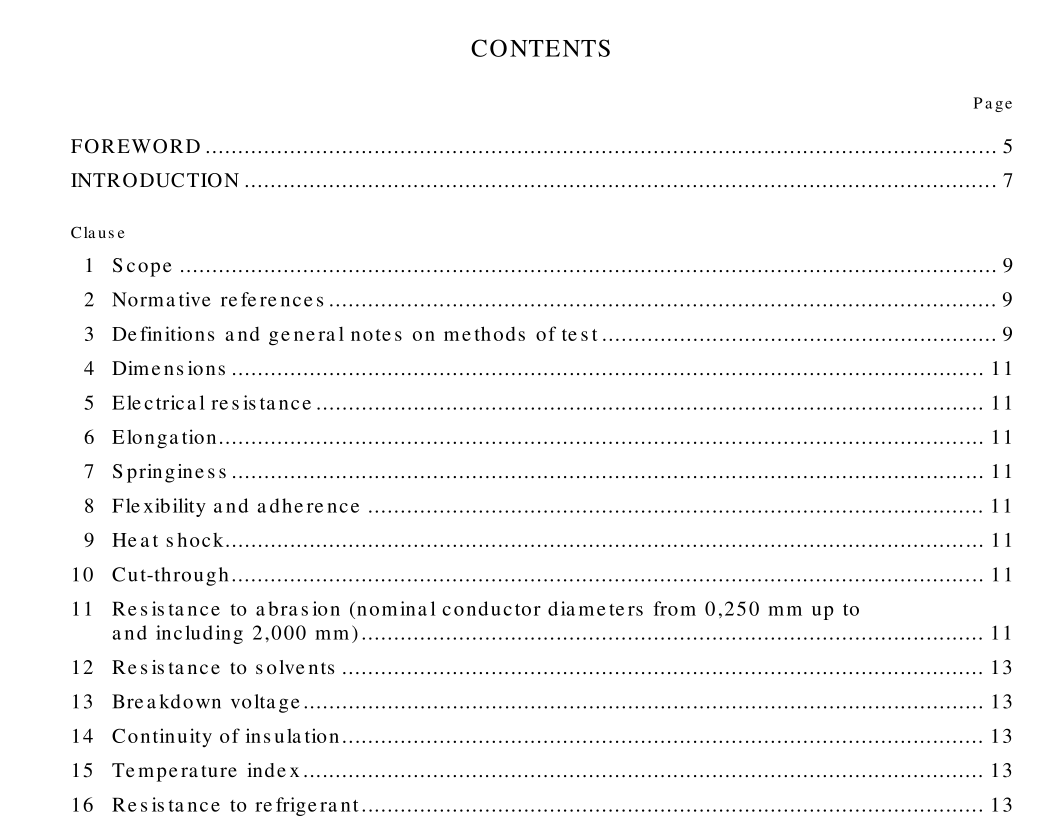IEC 60317-2 pdf download

IEC 60317-2 pdf download.Specifications for particular types of winding wires
1 Scope
This International Standard specifies the requirements of solderable enamelled round copper winding wire of class 130 with a dual coating. The underlying coating is based on polyurethane resin, which may be modified providing it retains the chemical identity of the original resin and meets all specified wire requirements. The superimposed coating is a bonding layer based on a thermoplastic resin. NOTE A modified resin is a resin that has undergone a chemical change, or contains one or more additives to enhance certain performance or application characteristics. Class 130 is a thermal class that requires a minimum temperature index of 130 and a heat shock temperature of at least 155 °C. The temperature in degrees Celsius corresponding to the temperature index is not necessarily that at which it is recommended that the wire be operated and this will depend on many factors, including the type of equipment involved. The range of nominal conductor diameters covered by this standard is: – Grade 1B: 0,020 mm up to and including 2,000 mm; – Grade 2B: 0,020 mm up to and including 2,000 mm. The nominal conductor diameters are specified in clause 4 of IEC 60317-0-1.
2 Normative references
The following standard contains provisions which, through reference in this text, constitute provisions of this International Standard. At the time of publication, the edition indicated was valid. All standards are subject to revision, and parties to agreements based on this International Standard are encouraged to investigate the possibility of applying the most recent edition of the standard indicated below. Members of IEC and ISO maintain registers of currently valid international standards. IEC 60317-0-1:1990, Specifications for particular types of winding wires – Part 0: General requirements – Section 1: Enamelled round copper wire.
3 Definitions and general notes on methods of test
For definitions and general notes on methods of test see clause 3 of IEC 60317-0-1. In case of inconsistencies between IEC 60317-0-1 and this standard, IEC 60317-2 shall prevail.
4 Dimensions
See clause 4 of IEC 60317-0-1.
5 Electrical resistance
See clause 5 of IEC 60317-0-1.
6 Elongation
See clause 6 of IEC 60317-0-1.
7 Springiness
See clause 7 of IEC 60317-0-1.
8 Flexibility and adherence
See clause 8 of IEC 60317-0-1, where the constant K used for the calculation of the number
of revolutions for the peel test shall be 150 mm.
9 Heat shock
See clause 9 of IEC 60317-0-1, where the minimum heat shock temperature shall be 155 °C.
10 Cut-through
No failure shall occur within 2 min at 170 °C.
11 Resistance to abrasion (nominal conductor diameters from 0,250 mm up to and including 2,000 mm)
The wire shall meet the requirements given in table 1.
17 Solderability
17.1 Nominal conductor diameters up to and including 0,050 mm The temperature of the solder bath shall be 375 ± 5 °C. The maximum immersion time shall be 2 s. The surface of the tinned wire shall be smooth and free from holes and enamel residues. 17.2 Nominal conductor diameters over 0,050 mm up to and including 0,100 mm The temperature of the solder bath shall be 375 ± 5 °C. The maximum immersion time shall be 2 s. The surface of the tinned wire shall be smooth and free from holes and enamel residues. 17.3 Nominal conductor diameter over 0,100 mm The temperature of the solder bath shall be (375 ± 5) °C. The maximum immersion (in seconds) shall be the following multiple of the nominal conductor diameter (in millimetres) with a minimum of 2 s.









